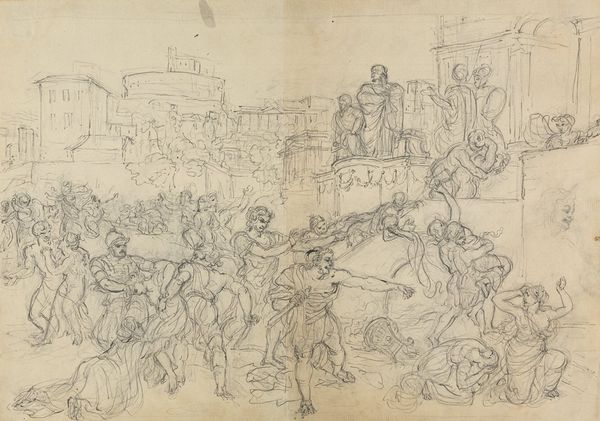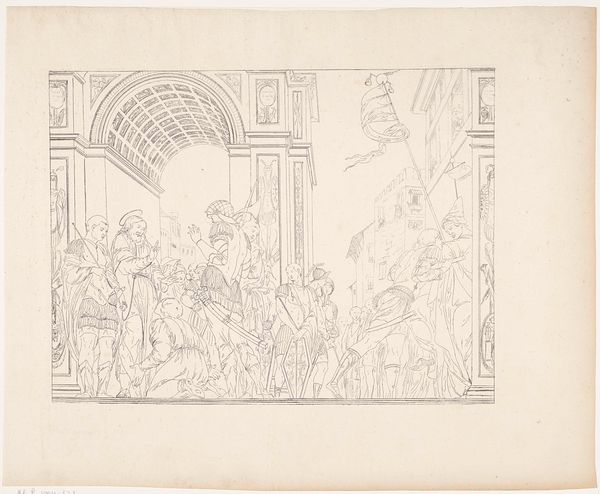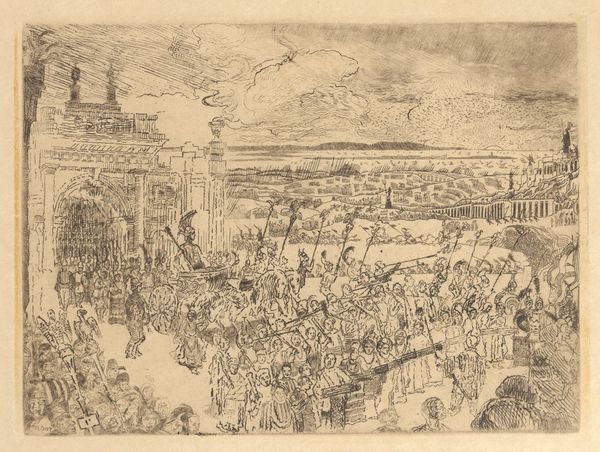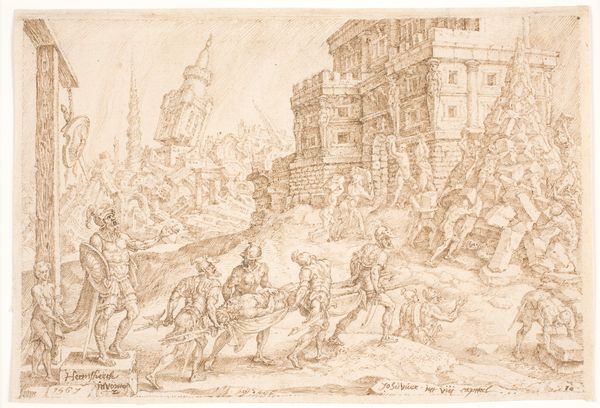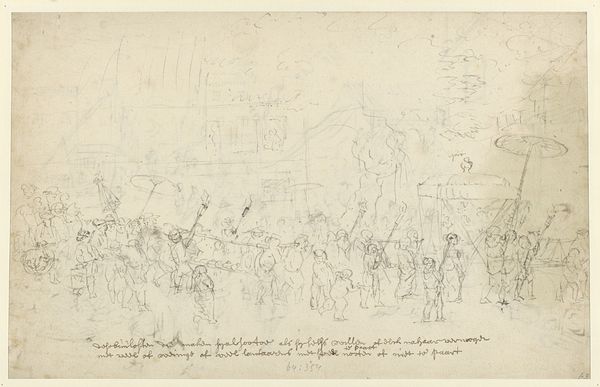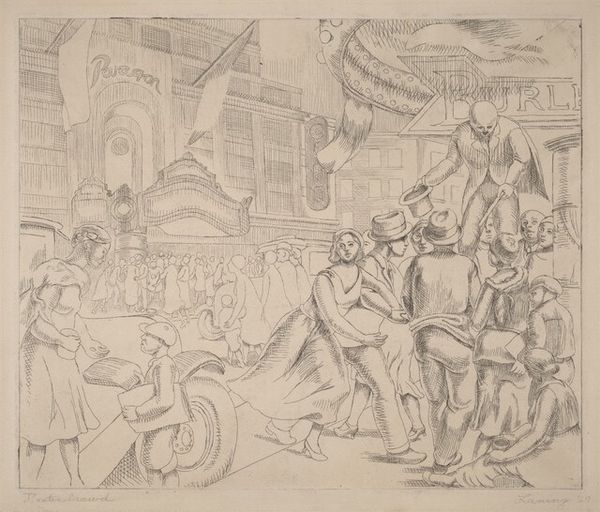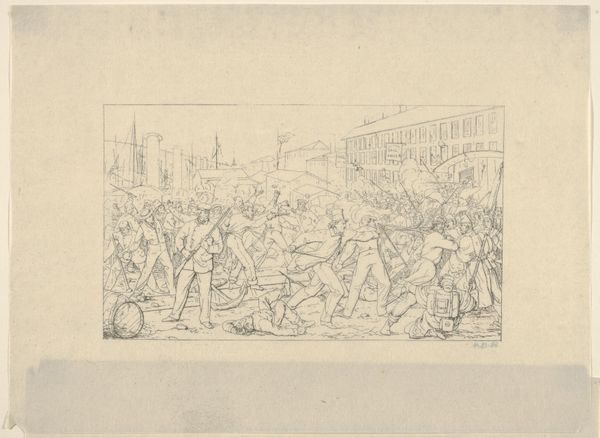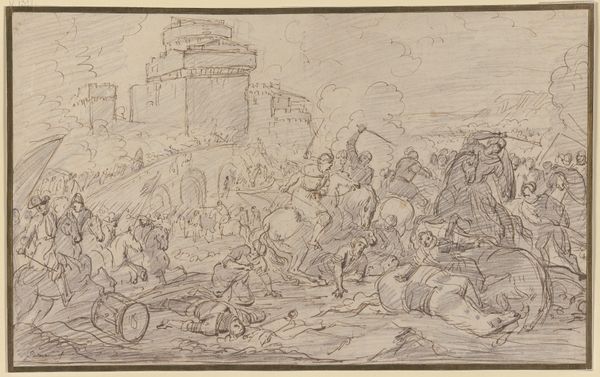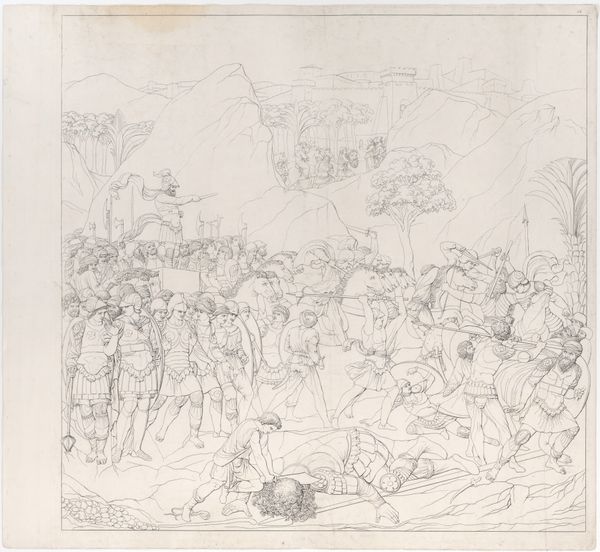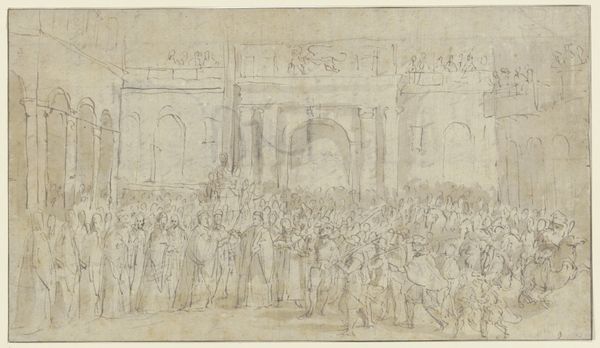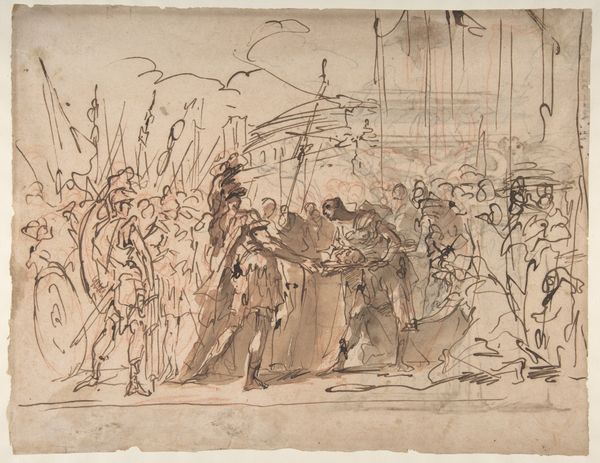
drawing, print, etching, ink
#
drawing
#
narrative-art
# print
#
etching
#
landscape
#
figuration
#
ink
#
soldier
#
line
#
history-painting
Dimensions: 6 5/8 x 8 1/2 in. (16.9 x 21.6 cm.)
Copyright: Public Domain
Curator: Jean Le Pautre's etching, "Aeneas's Farewell to Dido," made sometime between 1618 and 1682, uses ink to bring to life a moment of palpable narrative tension. Look closely at how he renders the textures – it speaks volumes about the conditions of its making. Editor: Yes, the level of detail achieved purely through line work is quite remarkable! The story unfolds dramatically before us. What strikes me most is how the line itself, and its reproducible quality via etching, become the central element. How does Le Pautre's process inform your understanding of this scene? Curator: Well, etching as a medium is deeply implicated in early modern consumer culture. This wasn’t just "art;" it was a commodity, produced through a workshop, distributed widely. Consider how the labor – the artisan’s skill, the materials used in the ink and printing process – all coalesce to deliver this image to a specific audience. Editor: So you’re suggesting we consider not just the "what" but the "how" – the mechanics of its creation and consumption, influencing our understanding of the narrative itself? The commodification. Curator: Precisely! Notice how the lines are almost frantic in places. Could this frenetic energy also mirror a growing merchant class or rising anxieties about fleeting capital in 17th century Europe, reflected in the increased access and affordability of art? Editor: I never considered the link between the art production and burgeoning economic models that way. That shifts my perspective! I tend to look for classical influences, thinking mainly of composition and figures. I’ll definitely pay more attention to how the materiality and mode of distribution are intertwined with the artistic content from now on. Curator: It's about questioning the established hierarchies— between ‘high’ art and its means of reproduction and circulation. Always question the means of its creation and what that tells you about society at that time!
Comments
No comments
Be the first to comment and join the conversation on the ultimate creative platform.


